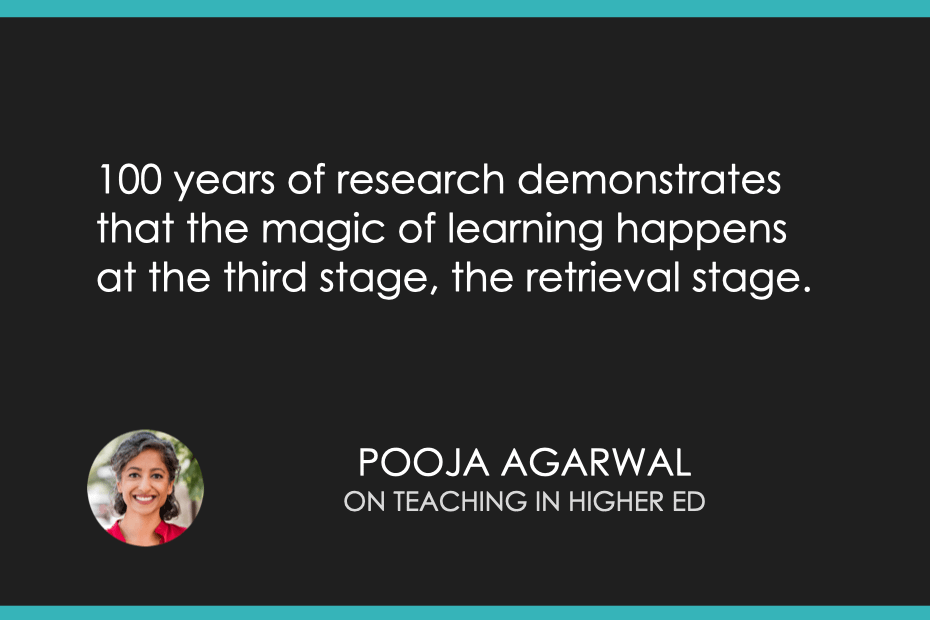
 Teaching in Higher Ed
Teaching in Higher Ed Lessons in Life and Retrieval Practice
13 snips
Aug 17, 2023 Cognitive scientist Pooja Agarwal discusses the magic of retrieval practice in solidifying learning. She emphasizes the benefits of forgetting as part of the learning process and provides examples of retrieval practice across age groups. The chapter also covers using Google Docs for syllabus organization and anchor links, time-saving software like TextExpander, embracing failure, and recommendations for science resources and nonprofit organizations.
AI Snips
Chapters
Transcript
Episode notes
Retrieval Is Where Learning Happens
- Retrieval practice is the third stage of learning where pulling information out actually solidifies memory.
- Focusing only on encoding overlooks the powerful learning gains that occur during retrieval.
Normalize Forgetting As Part Of Learning
- Normalize forgetting with students and treat retrieval attempts as part of learning, not failure.
- Encourage retrieval by framing lapses as opportunities that strengthen memory when recalled.
Children Remember By Sharing Favorites
- Pooja asked her young relatives about their favorite part of a Boston trip and they retrieved memories of the Mapparium.
- That casual question strengthened their memory of the visit via retrieval practice.

